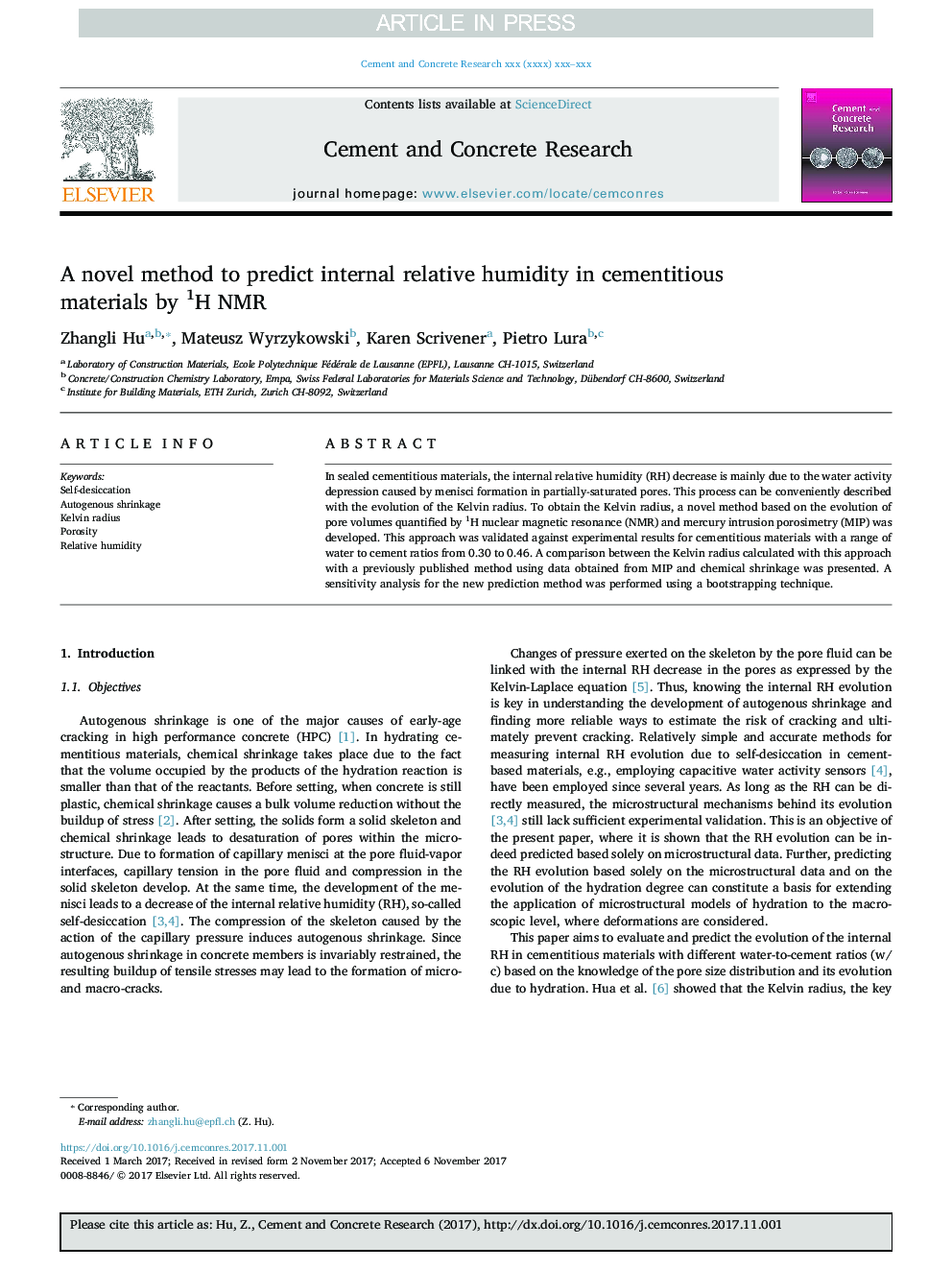| Article ID | Journal | Published Year | Pages | File Type |
|---|---|---|---|---|
| 7884858 | Cement and Concrete Research | 2018 | 14 Pages |
Abstract
In sealed cementitious materials, the internal relative humidity (RH) decrease is mainly due to the water activity depression caused by menisci formation in partially-saturated pores. This process can be conveniently described with the evolution of the Kelvin radius. To obtain the Kelvin radius, a novel method based on the evolution of pore volumes quantified by 1H nuclear magnetic resonance (NMR) and mercury intrusion porosimetry (MIP) was developed. This approach was validated against experimental results for cementitious materials with a range of water to cement ratios from 0.30 to 0.46. A comparison between the Kelvin radius calculated with this approach with a previously published method using data obtained from MIP and chemical shrinkage was presented. A sensitivity analysis for the new prediction method was performed using a bootstrapping technique.
Related Topics
Physical Sciences and Engineering
Engineering
Industrial and Manufacturing Engineering
Authors
Zhangli Hu, Mateusz Wyrzykowski, Karen Scrivener, Pietro Lura,
